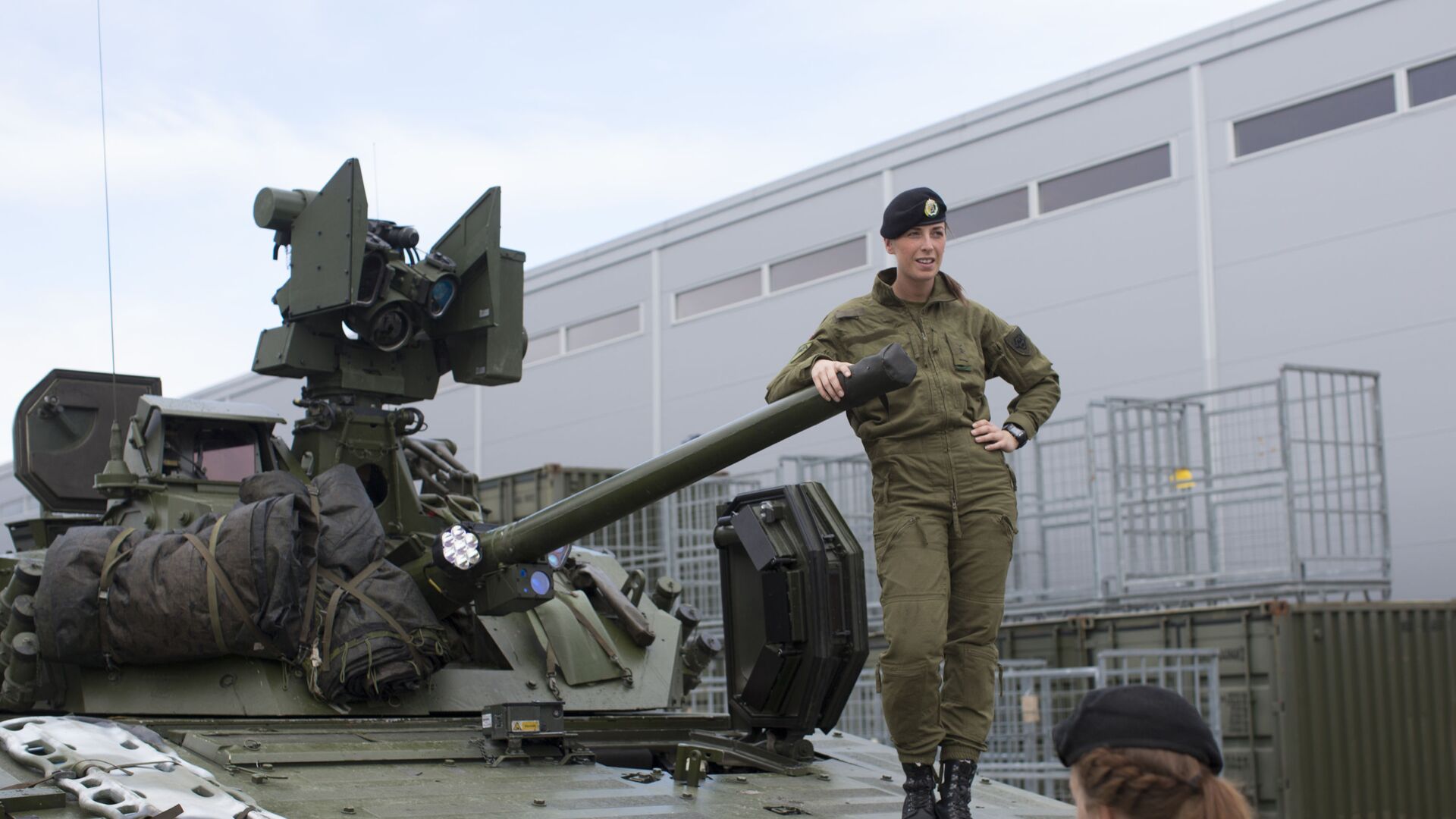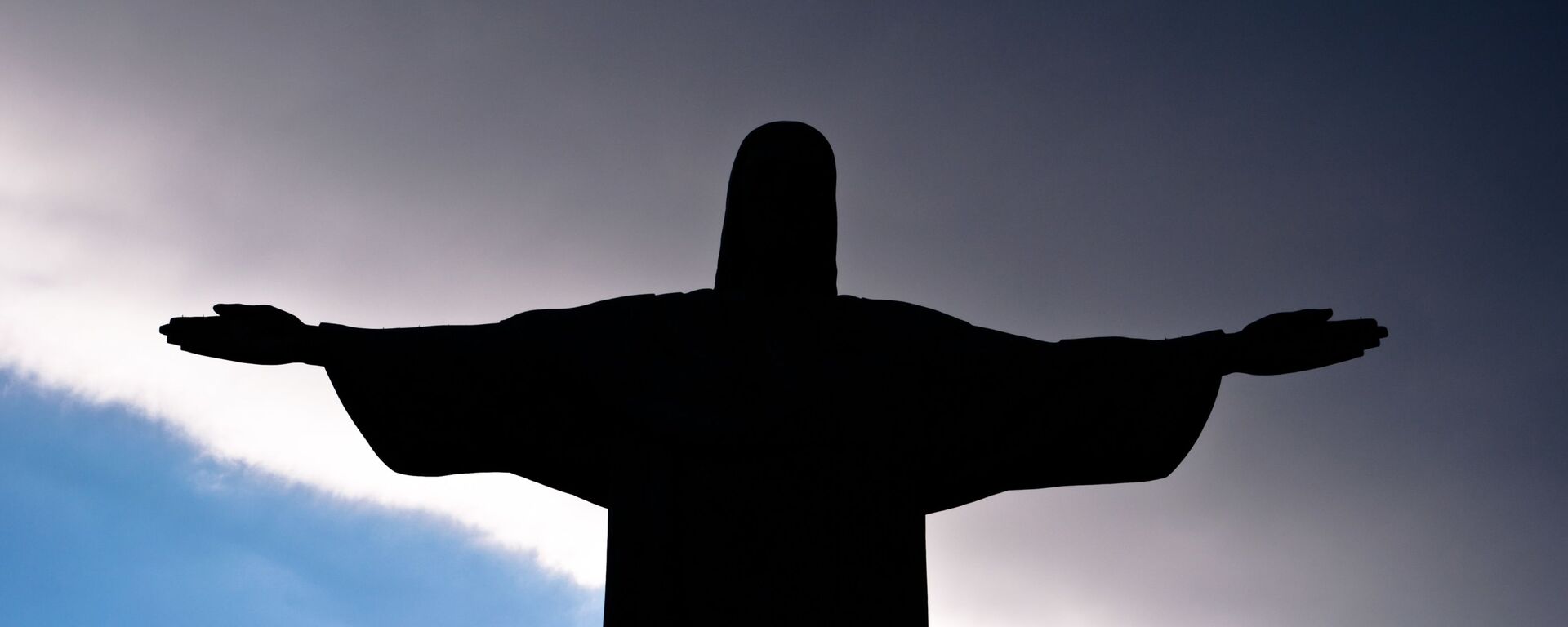https://sputnikglobe.com/20220829/norwegian-armed-forces-drop-prayer-during-lineups-1100101134.html
Norwegian Armed Forces Drop Prayer During Line-ups
Norwegian Armed Forces Drop Prayer During Line-ups
Sputnik International
Formerly one of the main pillars of royal power, the Church of Norway has gradually surrendered most of its authority as the Nordic country has become more... 29.08.2022, Sputnik International
2022-08-29T04:57+0000
2022-08-29T04:57+0000
2023-02-14T14:08+0000
newsfeed
scandinavia
norway
god
christianity
religion
https://cdn1.img.sputnikglobe.com/img/104461/97/1044619760_0:0:3072:1728_1920x0_80_0_0_4dc7d999328beef638180482b469f950.jpg
Norway's Armed Forces have decided to end the historic tradition of prayer during line-ups, the newspaper Adresseavisen reported.The Christian ceremony has been replaced with a so-called ethical appeal, which has been described as more open to other views of life. It has also been touted as ensuring the real right of exemption for non-Christian soldiers or non-believers.The Armed Forces sent a formal order to implement the change, thus bringing a centuries-old tradition to an end.The change comes 10 months after Stian Husby, a troop commander in the Royal Guard, pointed out that the state and the Church of Norway officially parted ways in 2016.However, he said that the ties were still so close that he found it difficult to consider the Armed Forces as anything other than a Christian organization. Husby singled out prayer during line-ups as particularly problematic.The Norwegian Armed Forces consists of five branches, the Army, the Navy (which includes the Coast Guard), the Air Force, the Home Guard, and Norwegian Cyber Defense. It has a peacetime size of more than 23,000 personnel, including military and civilian staff, and over 63,000 in full mobilization.The Church of Norway is an evangelical Lutheran denomination of Protestant Christianity and by far the largest Christian church in Norway. It became the state church 1020 and ceased that role in 2017, when it formally became a separate legal entity. The King of Norway was the church's head from 1537 to 2012, and historically the church was one of the main instruments of royal power and authority. Over the past century, though, it gradually ceded most administrative functions to the secular civil service. Nevertheless, the modern constitution still describes the church as “the people's church” and requires the King of Norway to be a member.Although Protestantism remains Norway's largest religion embracing 55 percent of the population, the share of people who consider themselves “personally Christian” has dropped to some 20 percent, according to various surveys. Furthermore, the Church of Norway has been leaking worshipers in recent decades, a trend mirrored in neighboring Nordic nations. The overall share of Norwegians covered by the Church of Norway has shrunk from nearly 86 percent in 2000 to some 68 percent in 2020.
https://sputnikglobe.com/20220627/majority-of-norwegians-say-they-dont-believe-in-god-in-groundbreaking-survey-1096691242.html
scandinavia
norway
Sputnik International
feedback@sputniknews.com
+74956456601
MIA „Rossiya Segodnya“
2022
News
en_EN
Sputnik International
feedback@sputniknews.com
+74956456601
MIA „Rossiya Segodnya“
Sputnik International
feedback@sputniknews.com
+74956456601
MIA „Rossiya Segodnya“
newsfeed, scandinavia, norway, god, christianity, religion
newsfeed, scandinavia, norway, god, christianity, religion
Norwegian Armed Forces Drop Prayer During Line-ups
04:57 GMT 29.08.2022 (Updated: 14:08 GMT 14.02.2023) Formerly one of the main pillars of royal power, the Church of Norway has gradually surrendered most of its authority as the Nordic country has become more secular – a trend revealed by its ever-shrinking membership. Although Protestantism remains Norway's largest religion, the number of self-confessed believers is dropping.
Norway's Armed Forces have decided to end the historic tradition of prayer during line-ups, the newspaper Adresseavisen
reported.
The Christian ceremony has been replaced with a so-called ethical appeal, which has been described as more open to other views of life. It has also been touted as ensuring the real right of exemption for non-Christian soldiers or non-believers.
The Armed Forces sent a formal order to implement the change, thus bringing a centuries-old tradition to an end.
“I think this is a very good decision, which is completely in line with our recommendation. This means that we will have a good and timely arrangement for safeguarding the exercise of faith and philosophy in the Armed Forces,” Nils Terje Lunde, deputy commander in the Armed Forces’ faith and philosophy corps, told Adresseavisen.
The change comes 10 months after Stian Husby, a troop commander in the Royal Guard, pointed out that the state and the Church of Norway officially parted ways in 2016.
However, he said that the ties were still so close that he found it difficult to consider the Armed Forces as anything other than a Christian organization. Husby singled out prayer during line-ups as particularly problematic.
The Norwegian Armed Forces consists of five branches, the Army, the Navy (which includes the Coast Guard), the Air Force, the Home Guard, and Norwegian Cyber Defense. It has a peacetime size of more than 23,000 personnel, including military and civilian staff, and over 63,000 in full mobilization.
The Church of Norway is an evangelical Lutheran denomination of Protestant Christianity and by far the largest Christian church in Norway. It became the state church 1020 and ceased that role in 2017, when it formally became a separate legal entity. The King of Norway was the church's head from 1537 to 2012, and historically the church was one of the main instruments of royal power and authority. Over the past century, though, it gradually ceded most administrative functions to the secular civil service. Nevertheless, the modern constitution still describes the church as “the people's church” and requires the King of Norway to be a member.
Although Protestantism remains Norway's largest religion embracing 55 percent of the population, the share of people who consider themselves “personally Christian” has dropped to some 20 percent, according to various surveys. Furthermore, the Church of Norway has been leaking worshipers in recent decades, a trend mirrored in neighboring Nordic nations. The overall share of Norwegians covered by the Church of Norway has shrunk from nearly 86 percent in 2000 to some 68 percent in 2020.


